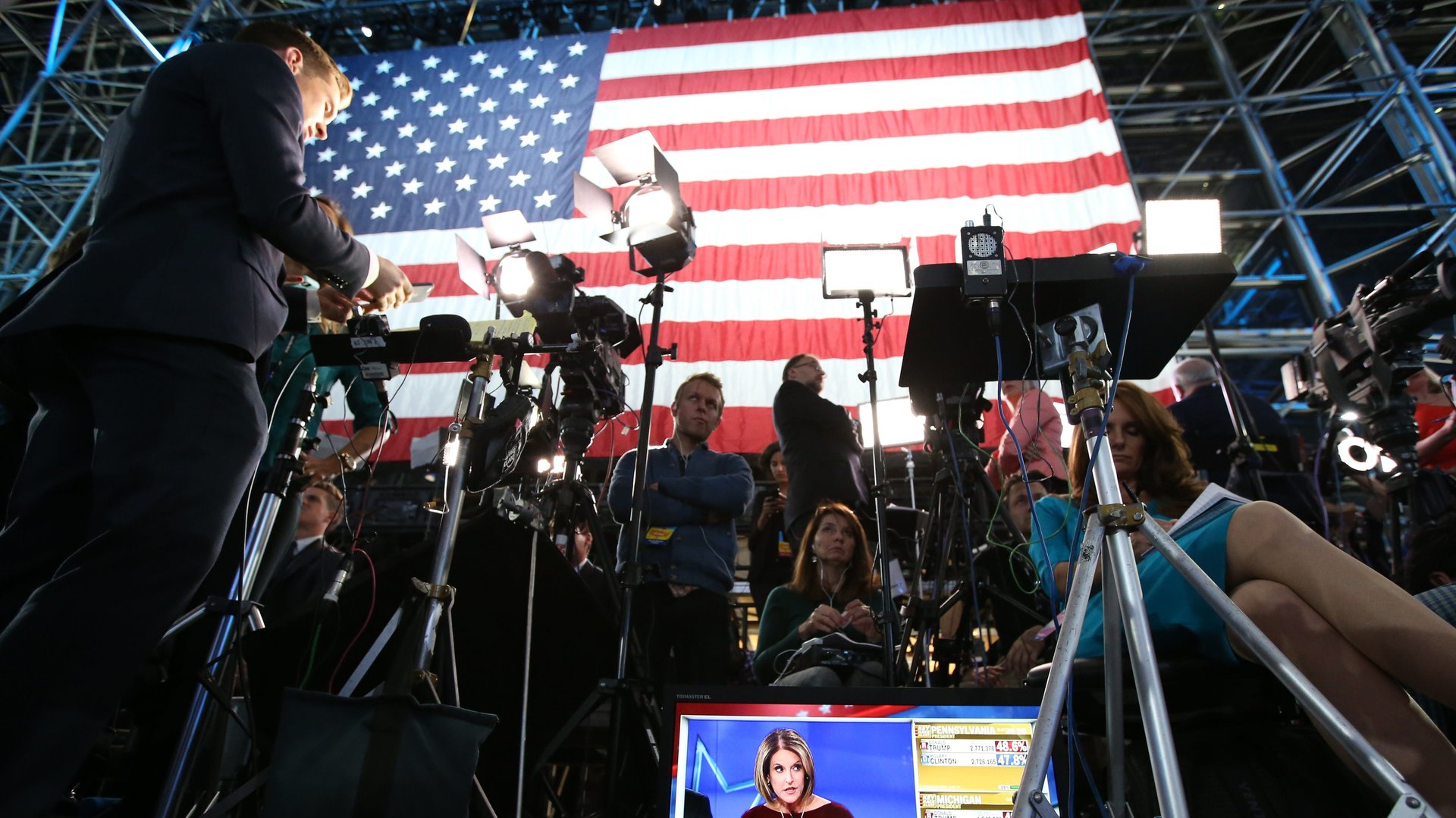I’m a journalist from rural America. The media can’t understand Donald Trump until it hires more of us
The American media botched the story of Donald Trump. Following his victory in the US presidential election last week, journalists have been reflecting on the blind spots that led them to underestimate the potency of his following—and the possibility that a man who ran on a white nationalist platform could become the leader of the free world.


The American media botched the story of Donald Trump. Following his victory in the US presidential election last week, journalists have been reflecting on the blind spots that led them to underestimate the potency of his following—and the possibility that a man who ran on a white nationalist platform could become the leader of the free world.
There are a number of factors that led the mainstream media astray in the 2016 election: polls, social media echo chambers, and an underestimation of white anger, among other factors. But among the most important is a lack of geographic diversity among mainstream journalists themselves, which blinded them to Trump’s appeal.
In my current life as a New York journalist, I fall firmly into the category of the well-educated, liberal city-dweller Trump so often criticized on the campaign trail. I blend in so much that most people think I was born into privilege. After all, I attended the right schools. I have the right hobbies. I work at the right places.
But my life has not always been this way. I was born in North Carolina and raised in a mostly white town with a population of 6,000. Growing up, I had no exposure to people outside my race, religion, or class.
As an adult, I am constantly searching for people who came from a similar background. But I rarely find them. That’s one of the reasons why I often mention where I come from and my experiences there—not because I’m proud of my upbringing per se, but because I think it’s so easy for journalists to overlook or misinterpret a huge part of the country.
As the 2016 election progressed, media outlets began to explore the question of exactly who Trump supporters were and why they were motivated to vote for him. First came the narrative that Trump owed his popularity to the working class; when it turned out that his base was largely better off than the average American, the narrative switched to the education divide.
But while it’s true that 67% of white people without a college degree voted for Trump, education doesn’t tell the whole story either. In largely rural states like North Carolina, college-educated white people tend to vote Republican and support more conservative candidates. Indeed, 54% of white college-educated men, and 45% of white college-educated women, voted for Trump too. All this suggests that it was ultimately not education or class, but a lack of exposure to the struggles and hardships of minorities and immigrants, that led people to support Trump.
But the media missed the importance of rural voters because there are not many people in journalism who come from rural areas. The industry is too nebulous, nepotistic, and opaque for most outsiders to navigate. Of course, there are exceptions to this rule. But the geographic uniformity among much of the mainstream media can explain its genuine, devastating shock at Trump’s win, a success propelled by 62% of rural voters. Even as the polls increasingly suggested Trump had a shot, conventional wisdom on the coasts held that Hillary Clinton would find her way to the White House.
This is understandable—because if you’ve never been to a truly rural small town, much less lived in one, it’s quite hard to understand people’s motivations in voting for Trump. The Huffington Post was so baffled that it initially covered the campaign as entertainment rather than politics, clearly underestimating his political power.
Here’s the truth: if you live in an American town where everybody knows everybody, where everyone shares the same opinions and values, and where it seems like the media and politicians largely ignore your life and your needs, then of course you pay attention when someone finally acknowledges you and your hardships. Growing up, I watched as factories closed and the tobacco business declined, taking most of the middle class with them. I can also attest to the very real stigma associated with being from rural parts of the US. Urban elites often do look down on rural Americans as ignorant, uneducated, and close-minded, fueling resentment and solidifying the cultural divide between populations.
Had the media understood why some people were attracted to Trump from the beginning, journalists might have been more thoughtful in their approach—considering, for example, how giving coverage to his every rally and outlandish new comment could build his following.
It’s too late now. But the media should make geographic diversity, along with racial, ethnic, and gender diversity, a priority in the months and years ahead. The movement that led to Trump is far from over; in fact, it feels more empowered now than it has in years. If publications want to be in a position to report on national politics accurately, they need to hire from across the nation, too.